What are Cheese Caves? The Evolution and Purpose of Cheese Caves
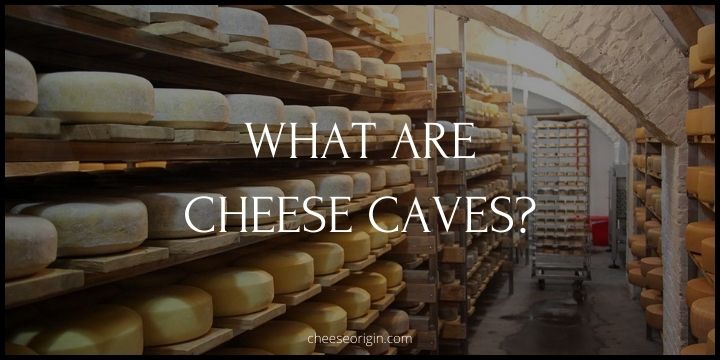
Today, we’re delving deep beneath the earth’s surface to explore a fascinating and lesser-known aspect of cheese production: cheese caves.
These subterranean marvels are not your typical caves filled with stalactites and bats. Instead, they are home to wheels of cheese, silently maturing to reach their full flavor potential.
From their historical origins to their modern adaptations, cheese caves have played an integral role in the evolution of cheese-making.
So, join us as we embark on this journey, discovering the purpose of cheese caves, their transformative impact on our favorite cheeses, and how they’ve evolved over time to meet the ever-changing needs of the global cheese industry.
Quick Facts About Cheese Caves
| Fact | Detail |
|---|---|
| What are Cheese Caves? | Underground structures, often naturally occurring, are used for the maturation and storage of cheese. |
| Role in Cheese Making | Provide the perfect conditions (humidity, temperature, and bacteria) for the cheese to age and develop unique flavors. |
| Historical Use | People have been using caves to age cheese for thousands of years, dating back to the Roman Empire. |
| Modern Cheese Caves | Today, many cheesemakers use artificially created “caves” or climate-controlled rooms that mimic the conditions of natural caves. |
| World’s Largest Cheese Cave | Located in Roquefort, France. It spans around 2 miles and has been used to mature Roquefort cheese since about 1070 AD. |
| Cheese Caves in the US | In the United States, one of the most famous cheese caves is located in Missouri. It’s a 400,000-square-foot underground cave used to age cheese and store surplus dairy products. |
| Variety of Cheeses | Different types of cheeses require different aging processes and thus different types of caves. For example, blue cheese is aged in damp, chilly caves, while cheddar prefers drier, cooler conditions. |
| Impact on Flavor | The environment inside the cave, including the types of mold and bacteria present, can significantly affect the flavor and texture of the cheese. |
| Eco-Friendly | Cheese caves are considered eco-friendly as they use the earth’s natural insulation to maintain the perfect temperature and humidity levels. |
| Tourist Attractions | Many cheese caves, like those in France and the US, have become tourist attractions where visitors can learn about the cheese-making process and sample various types of cheese. |
What are Cheese Caves?
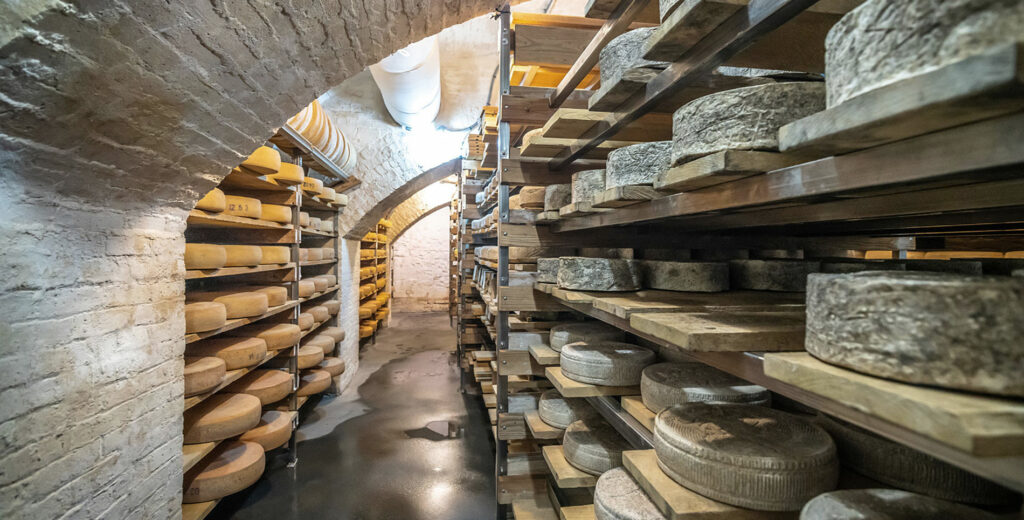
Cheese caves are unique environments used for the aging and storage of cheese. They can range from actual caves to underground cellars, converted mines, or even specially designed rooms in buildings.
These locations provide the perfect conditions – consistent temperature, high humidity, and good ventilation – necessary for the cheese to mature and develop its flavor and texture.
In a cheese cave, cheese undergoes a process called affinage, where it is carefully tended to ensure optimal aging. This might involve turning the cheese, brushing its surface, or washing it with a solution, depending on the type of cheese.
One of the most notable examples of cheese caves is found in Missouri, where hundreds of thousands of pounds of American cheese are stored in converted limestone mines. These caves maintain a constant 36 degrees Fahrenheit, providing ideal conditions for storing and aging cheese.
Cheese caves play a crucial role in the cheese-making process, allowing for the production of many varieties of cheese, each with its unique qualities.
From the creamy and soft Brie cheeses to the robust and tangy blue cheeses, these caves contribute significantly to the diversity and richness of the world of cheese.
Why are caves good for cheese?
- Ideal Climate Conditions: Caves naturally maintain a consistent temperature and high humidity level, both of which are crucial for the aging process of cheese. This stable environment ensures the cheese doesn’t dry out and age too quickly.
- Natural Microflora: Caves are teeming with natural microflora such as mold and bacteria, which contribute to the fermentation process and the development of complex flavors in cheese.
- Protection: Being underground, caves offer protection from external elements and disturbances, ensuring the cheese matures uninterrupted.
- Absorption of Flavors: The cheese can absorb subtle flavors from its surroundings in a cave, adding to its unique taste and aroma.
- Eco-Friendly: Utilizing the earth’s natural insulation, caves are an energy-efficient way to store and age cheese without the need for artificial cooling or humidifying systems.
- Large Storage Capacity: Caves, especially man-made ones, can be designed to hold large quantities of cheese, making them ideal for commercial cheese production.
- Cultural Tradition: Many regions have a long history of using caves for cheese aging, and this traditional method is often considered to produce superior-quality cheese.
- Tourism: Cheese caves can also serve as tourist attractions, allowing visitors to learn about the cheese-making process and sample different types of cave-aged cheese.
How long can cheese last in cheese caves?
The duration for which cheese can last in cheese caves largely depends on the type of cheese. Some types of cheese can be aged between 6 and 25 years in a cave.
Industrial mozzarella, which is often stored in liquid, may last up to a day or two once separated from the liquid it comes with. On the other hand, firmer cheeses with less moisture content, such as Parmesan and Pecorino Romano, can be kept for a really long time, often 2 months or more.
It’s also worth noting that the United States Department of Agriculture (USDA) has been using cold storage caves to store cheese and other dairy products for decades. In fact, the US government reportedly owns 1.4 billion pounds of cheese, some of which is stored in converted limestone mines kept at a constant temperature of 36 degrees Fahrenheit.
What does cave cheese taste like?
The taste of cave-aged cheese can vary greatly based on the type of cheese, the specific cave conditions, and the length of aging.
- Depth of Flavor: Cave-aged cheeses are generally known for their depth of flavor. The stable, humid conditions in a cave allow the cheese to age slowly and develop complex flavors.
- Earthy Notes: Many cave-aged cheeses have distinct earthy notes, which can be attributed to the natural molds and bacteria present in the cave environment.
- Rich and Nutty: Some cave-aged cheeses, like Gruyère or Comté, may develop a rich, nutty flavor over time.
- Sharp and Tangy: Others, like blue cheese aged in caves, may become sharper and more tangy as they mature.
- Creamy and Mellow: Some cave-aged cheeses, like Brie or Camembert, can become incredibly creamy and mellow.
- Unique Flavors: In some cases, the cheese may also absorb subtle flavors from its surroundings in the cave, adding unique local characteristics to its taste profile.
What types of cheese need to be caved?
There are several types of cheese that benefit from being aged in caves. Here are a few examples:
- Roquefort: This is a blue cheese made from sheep’s milk. It is aged in the natural Combalou caves of Roquefort-sur-Soulzon in France.
- Cheddar: Some types of cheddar cheese, particularly clothbound cheddar, are aged in caves to develop their unique flavor profiles.
- Gruyère: A hard cheese that originated from Switzerland, Gruyère is often cave-aged to enhance its complex, nutty flavor.
- Comté: Another hard cheese from France, Comté is traditionally aged in Fort Saint-Antoine, a former military fort converted into a cheese maturing cellar.
- Brie de Meaux and Brie de Melun: These soft cheeses from France are often cave-aged to develop their rich, creamy flavor and bloomy rind.
- Stilton: An English cheese known for its strong flavor and blue veins, Stilton is traditionally matured in cool, humid environments similar to caves.
- Cantal: This semi-hard cheese from France is traditionally aged in cool, damp cellars or caves for several months to develop its mild, milky flavor.
- Parmigiano-Reggiano and Grana Padano: These Italian cheeses are often aged in large maturation rooms that mimic the conditions of a cave.
Why does the United States have cheese caves?

The United States has cheese caves primarily as a means of storing and aging cheese. The US Department of Agriculture (USDA) has been using cold storage caves for decades to store cheese and other dairy products.
These caves, often made from converted limestone mines, provide the perfect conditions for cheese storage. They maintain a constant temperature and humidity level, which are crucial for the proper aging of cheese.
One of the reasons why the US government stores such large quantities of cheese is related to agricultural policy. In the past, the government bought surplus cheese from dairy farmers as a form of price support. This cheese was then stored in caves and other facilities until it could be used for various programs, including food assistance programs.
Today, while the use of cheese caves by the USDA has shifted over time, they still play an important role in the country’s cheese industry. Cheese producers also use caves to age their cheese and develop unique flavors that can’t be achieved with other methods.
Are the cheese caves in Missouri real?
Yes, the cheese caves in Missouri are indeed real. They are converted limestone mines that provide the perfect conditions for storing and aging cheese due to their constant temperature and humidity levels.
These “cheese caves” are not natural caves but rather part of a large underground facility, which is used by dairy companies to store millions of pounds of cheese. The U.S. government has been using these facilities for decades to store surplus cheese.
According to multiple sources, there are currently around 1.4 billion pounds of cheese stored in these caves. This practice began as part of agricultural policy, where the government would buy surplus cheese from dairy farmers as a form of price support. The cheese is then stored until it can be used for various programs, including food assistance programs. (source)
Can I visit the cheese caves in Missouri?
While the cheese caves in Missouri are fascinating, they are not open to the public for tours or visits.
These caves are commercial operations used for storing and aging cheese, and they need to maintain specific conditions for this process.
However, Missouri is known for its natural caves, and there are several that you can visit. For example, Fantastic Caverns is a popular tourist attraction. It’s the only ride-through cave in America.
So, if you’re interested in caves, there are definitely options to explore in Missouri – just not the cheese caves.
Where is the World’s Largest Cheese Cave?
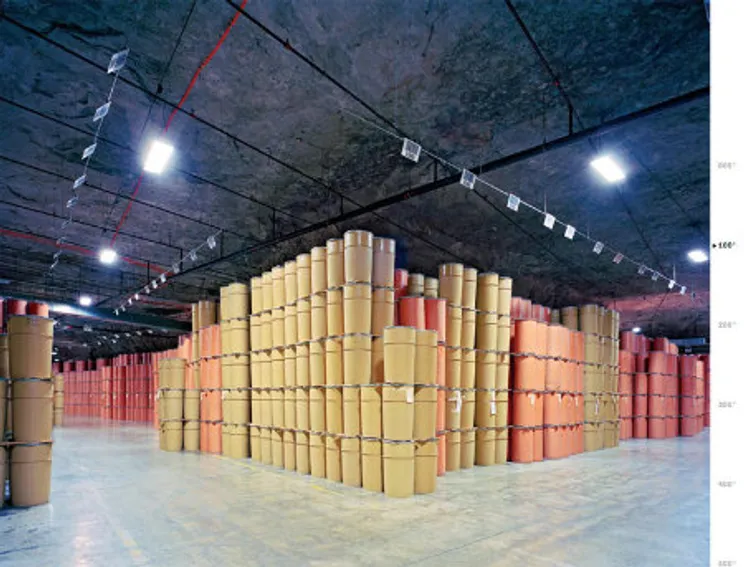
The world’s largest cheese cave is located in Springfield, Missouri. This isn’t a natural cave but rather a converted limestone mine that’s been transformed into a 3.2-million-square-foot warehouse, known as Springfield Underground.
The facility is kept at a constant temperature perfect for storing and aging cheese, making it an ideal storage solution for dairy products. Currently, it’s reported that the U.S. government has around 1.4 billion pounds of cheese stored in these caves.
Despite being known as a “cheese cave,” this underground facility rents out space to hundreds of companies and not just those in the dairy industry.
Please note that while this information is accurate as of today’s date (9/26/2023), the details could change over time.
The History and Evolution of Cheese Caves
Cheese caves have been integral to the history and development of cheese, and their usage has evolved over time. This article delves into the rich history and significance of these caves, from the oldest known cheese caves to the modern techniques used in cheese aging today.
The Oldest Known Cheese Caves
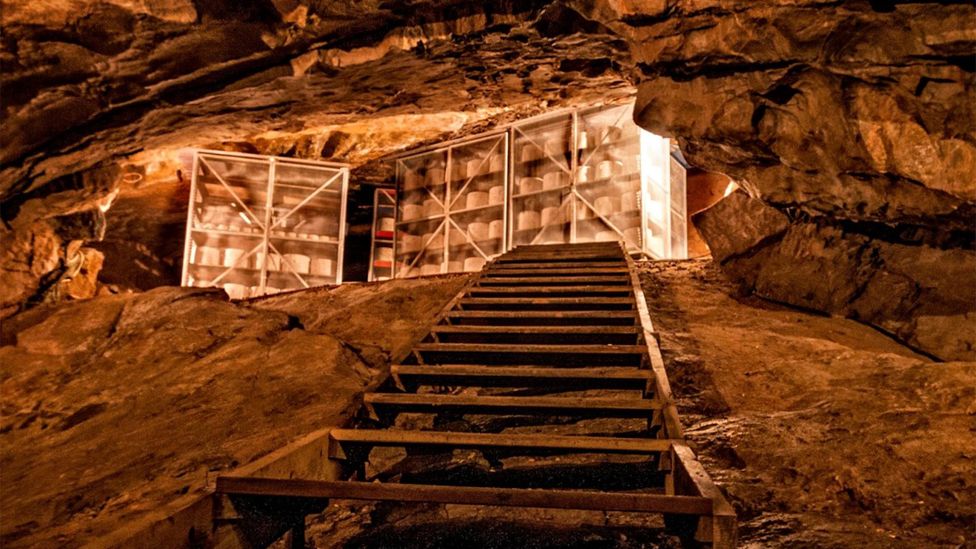
Cheddar, England is home to one of the earliest known instances of cheese caves. These caves were formed approximately 500,000 years ago, with the first mention of cheese here dating back to 1170 when King Henry II made a significant purchase.
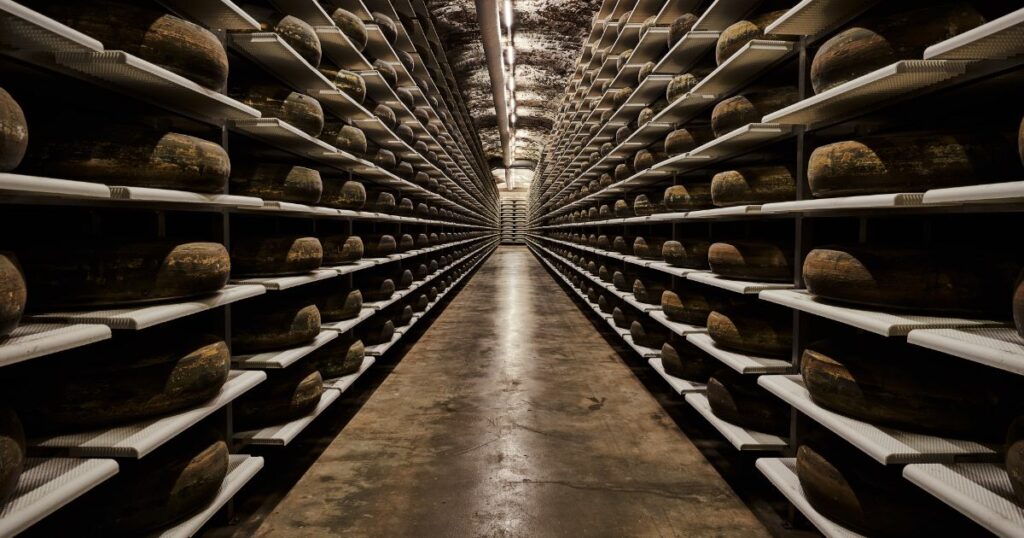
Another ancient cheese cave can be found in Switzerland’s Kaltbach Cave. This cave, estimated to be 22 million years old, is still in use today for aging Emmi Kaltbach cheeses.
Why Were Cheese Caves Used?
The primary reason for using cheese caves was the constant temperature and humidity they provided, which proved ideal for the maturation process of certain types of cheese. The naturally cool and moist environment allowed for controlled aging, enhancing the flavor, texture, and quality of the cheese.
The Evolution of Cheese Cave Usage
Over time, the use of natural caves has evolved to include man-made structures that mimic the conditions of these caves. An example of this is the converted limestone mines in Missouri, where hundreds of thousands of pounds of American cheese are stored. These “cheese caves” maintain a constant 36 degrees Fahrenheit, perfect for cheese aging.
Modern Techniques and Global Methods
Today, different countries employ unique methods and technologies for cheese aging. For example, in Montepulciano, Italy, Pecorino Riserva Cheese is aged for at least a year in an ancient cellar.
In America, the Caves of Faribault have been home to the country’s first Blue Cheese since 1936. Meanwhile, Murray’s caves are the oldest in the country, having opened in 2007.
Impact of Cheese Caves on Cheese Quality
Cheese caves, whether natural or man-made, impact the flavor, texture, and quality of cheese. The aging process in these caves allows for the development of complex flavors. Factors such as humidity, temperature, and ventilation play significant roles in this process.
For instance, high humidity prevents the cheese from drying out, while low temperatures slow down the aging process. Adequate ventilation, on the other hand, ensures that undesirable molds do not grow on the cheese.
In conclusion, cheese caves have a rich history and continue to be a vital part of cheese production worldwide. Their impact on the flavor, texture, and quality of cheese is undeniable, making them an integral part of the cheese-making process.
Also read:
- The Ultimate Guide to Queso Blanco: A Taste of Mexico
- What is Cottage Cheese? An Exciting Guide to Its Many Uses
- Asiago Cheese: An In-depth Exploration of Nutrition and Taste
- The Ultimate Guide to Jarlsberg: Delicious and Nutritious
- Ricotta Guide: All You Need to Know About This Versatile Cheese
- Neufchâtel: A Creamy Delight from Normandy
- The Ultimate Guide to Paneer Cheese: India’s Favorite Cheese





